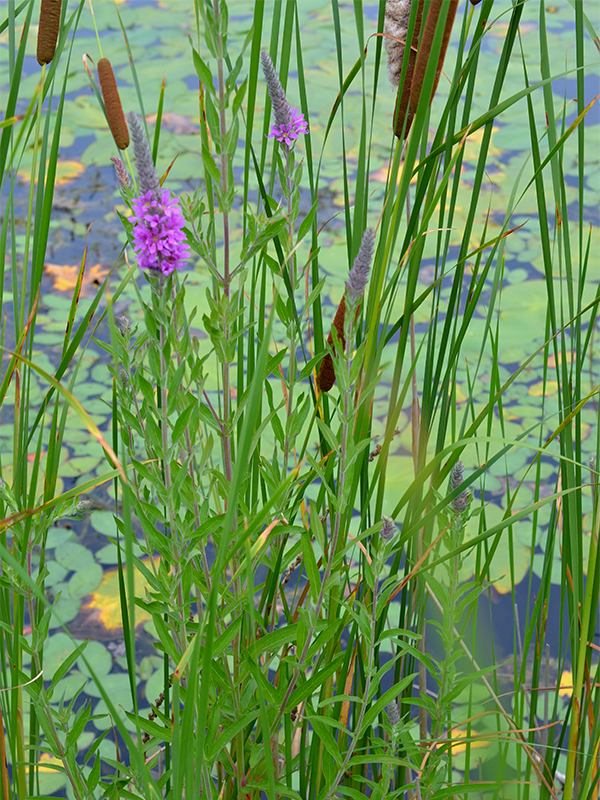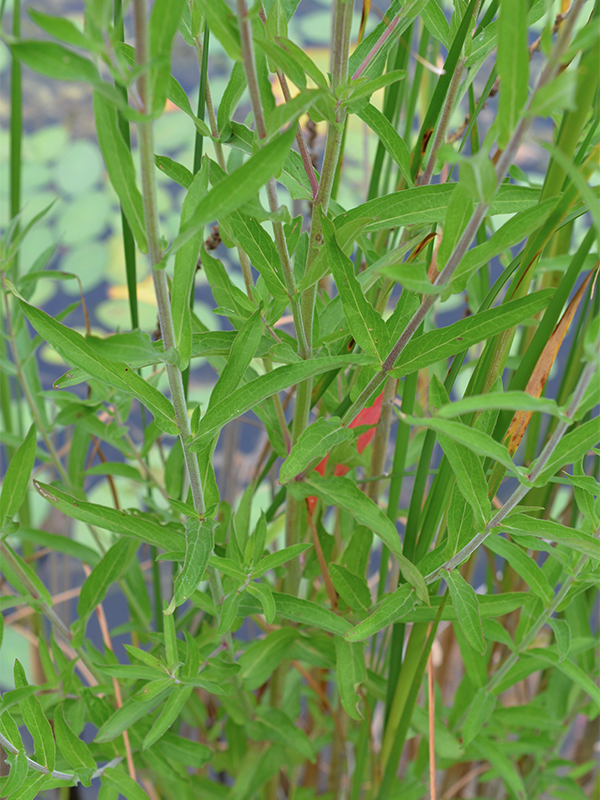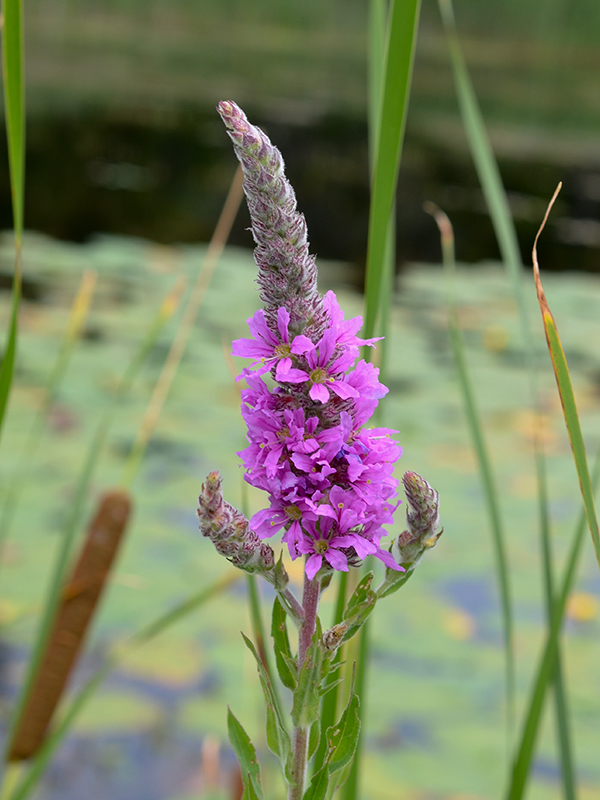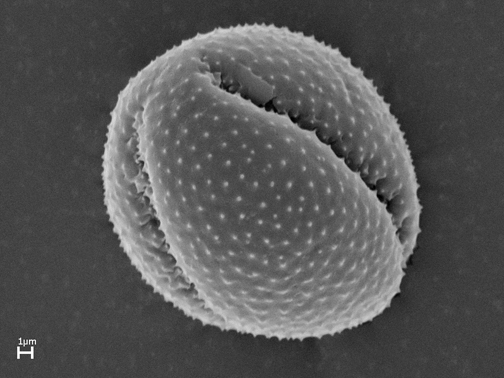| General Description | An invasive wetland perennial. |
| ID Characteristic | Brightly coloured flowers. |
| Shape | Clumps. |
| Propagation | Self seeding and through division of rhizomes. |
| Cultivation | Best grown in medium to wet soils in full sun to light shade. Flowering spikes should be deadheaded immediately after bloom to prevent self-seeding. Plants may be sheared to the ground after flowering or if foliage becomes tattered from insect damage. If sheared in mid-summer, new foliage generally will appear in 2 weeks with a possible autumn rebloom. Plants are most invasive in wet soils. |
| Notable Specimens | Port Franks, Ontario, Canada. |
| Habitat | Wetlands, including lake, pond, stream and swamp margins. |
| Leaf Description | Downy, stemless, stiletto-shaped leaves grow up to 10 cm and are opposite or sometimes in whorls of three. |
| Flower Description | Flowers appear in dense terminal spikes up to 45 cm long. |
| Colour Description | Foliage is green. Flowers are bright magenta to purple. |



